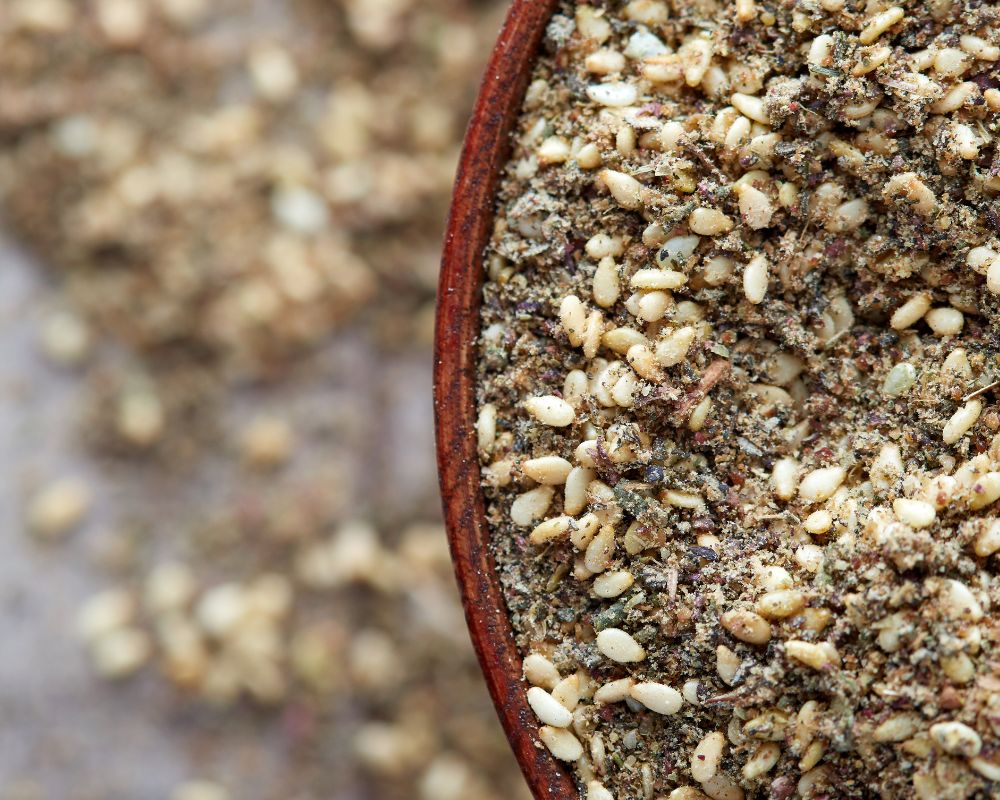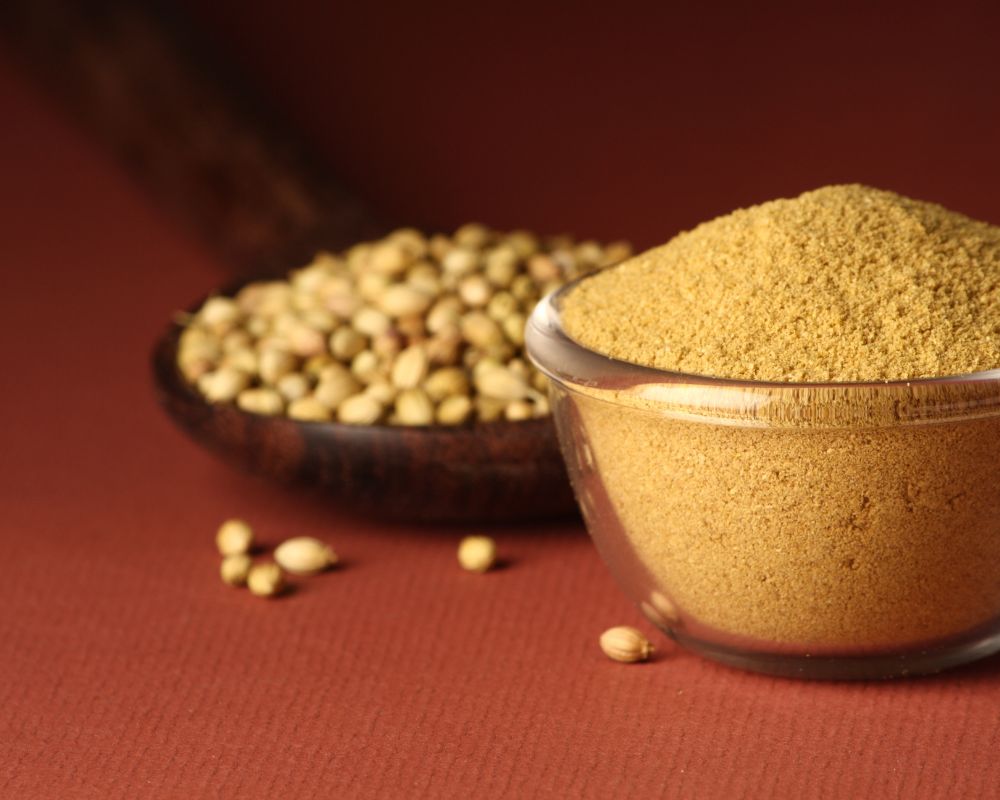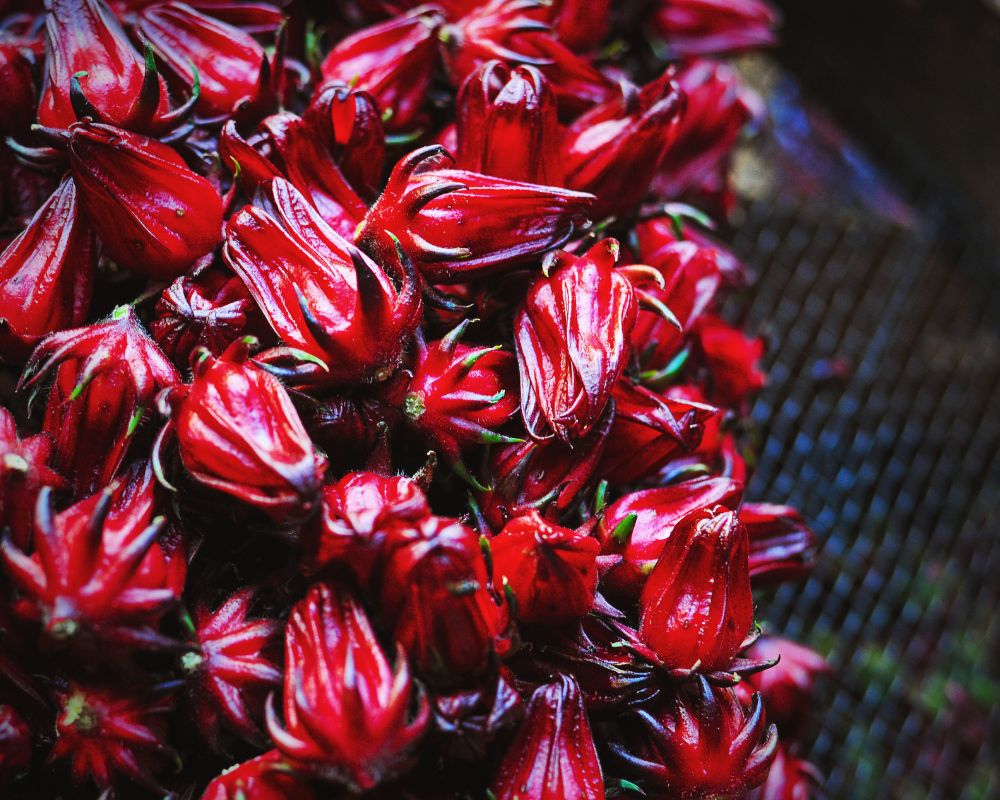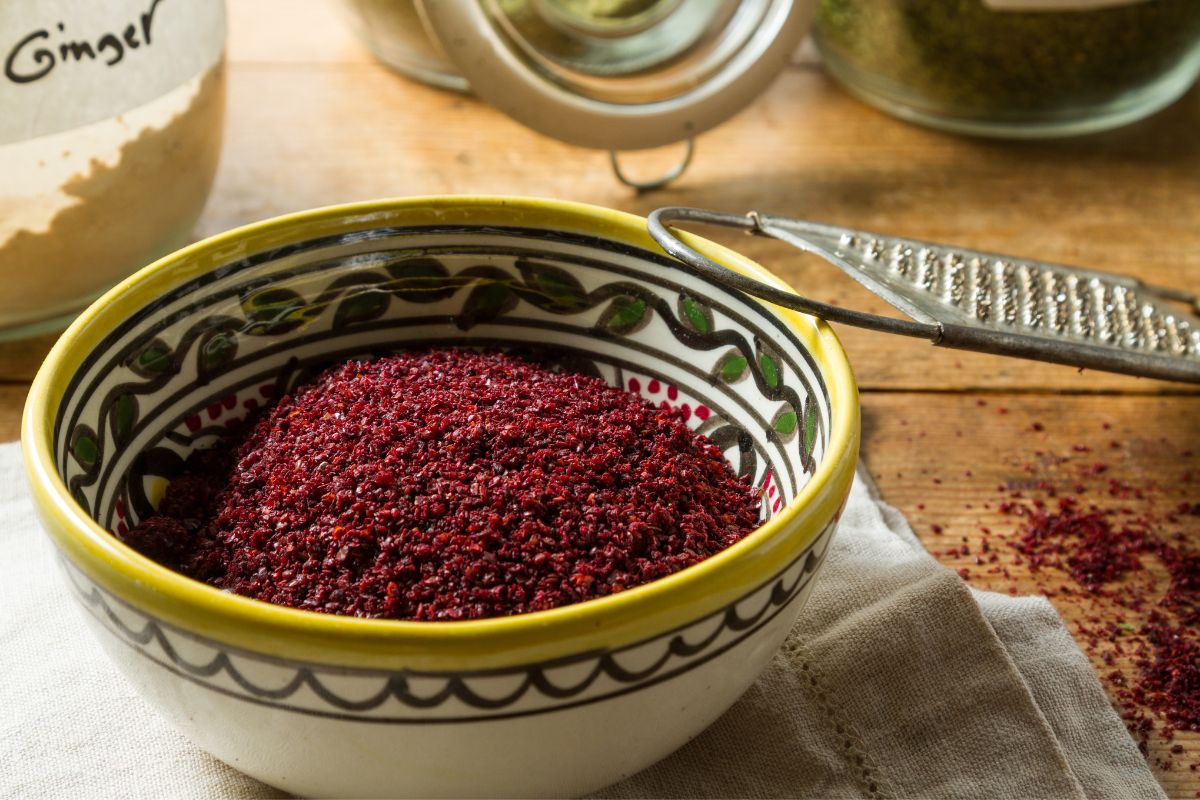Sumac is a Mediterranean spice made from red berries that provides a citrusy flavor and vibrant coloring to any dish. If you don’t have any sumac on hand, the best substitutes are lemon pepper seasoning, and tamarind. Sumac and its replacements are commonly used in marinades, salad dressings, and garnishes.
Table of Contents
What does sumac taste like?
The flavor of sumac has a similar flavor to lemon juice. Sumac’s lemony flavor is tart with a hint of sweetness and floral notes. It brings a citrusy flavor without the liquid. Experts compare it to lemon pepper seasoning since both spices provide a lemon, tangy, and salty flavor.
What is sumac used for?
You can use sumac berries whole or ground, but ground sumac is more commonly used and offers more options.
Sumac works well as a marinade to tenderize meat. The acidity of sumac cuts through the richness of meats such as grilled meat, kebabs, or lamb. It is common to use sumac to season barbecue across the Middle East.
- Sumac pairs well with salad dressings
- It brings sweet and sour notes to any dish
- Mixing sumac with olive oil and sea salt creates a bread dip
- Sumac is perfect as a garnish and topping for hummus
- Sprinkle traditional chickpea hummus with sumac to give the dip an acidic tang.
What spice is similar to sumac?

Zaatar (Za’atar) is a commonly used spice similar to sumac. It is a spice blend that contains sumac, salt, sesame seeds, and dried herbs such as thyme, marjoram, and oregano.
Zaatar goes in the same dishes as sumac. It has an herby and exotic flavor profile. It can be nutty and crunchy due to the sesame seeds. Both zaatar and sumac have tangy flavors, but sumac has a lemon flavor that zaatar lacks.
Can I substitute Zaatar for sumac?
You can use zaatar as a sumac alternative in any recipe. If you don’t have any sumac on hand, you can use dried thyme, sesame seeds, and lemon zest.
To keep the taste similar to sumac, use 2 tablespoons of sesame seeds, 1 tablespoon of thyme, and 2 teaspoons of sumac or the zest from a lemon.
What is the difference between Zaatar and sumac?
Sumac is a single-ingredient spice, while zaatar is a blend of ingredients. Both are middle eastern spices, but zaatar has more of an herby flavor, while sumac is more citrusy.
Keep the differences in taste in mind when substituting one for the other. Zaatar will give dishes a nutty and earthy flavor due to the thyme and marjoram. Sumac will give dishes a fruity and lemony flavor.
7 other great sumac substitutes
- Lemon juice + zest
- Smoked paprika
- Ground coriander
- Horseradish
- Currant
- Sorrel
- Rose hips
| Lemon juice + zest | The best substitutes for sumac, used on baked goods, such as muffins, pies, and pancakes |
| Smoked paprika | Commonly used as a garnish or to add coloring to a dish |
| Ground coriander | Coriander is more earthy, nutty, goes well with batters, doughs, sauces, and marinades |
| Horseradish | Its taste profile is similar to sumac, freat for soups and stews |
| Currant | More tangy than currant, blends well in smoothies and milkshakes |
| Sorrel | Offers the same tart flavor that sumac, great for salads, soups, and fish dishes |
| Rose hips | Adds similar color, used for syrups, and jellies |
1. Lemon juice + Zest

Lemon juice and zest are among the best substitutes for sumac. Lemon is the predominant flavor in sumac, so lemon juice and zest will bring out this fruity, sour taste as a substitute.
The visual effect from the colorful sumac won’t be present, but the taste will be extremely similar. Lemon zest is more potent than sumac, so use less to attain the same flavor profile.
Lemon juice and zest are frequently used on baked goods, such as muffins, pies, and pancakes. This combination is also popular in marinades, sauces, and salad dressings.
2. Smoked paprika

Smoked paprika does not have the same lemon flavor as sumac, but it will give the dish a similar red coloring. Paprika is more commonly used as a garnish or to add coloring to a dish, while sumac is used more commonly for its taste.
If a recipe calls for sprinkling sumac over a dish such as a yogurt, paprika can work as a substitute.
3. Ground coriander

Ground coriander has a similar lemon taste as sumac. Coriander is more earthy, nutty, and not as vibrant, but it will add a freshness to dishes that sumac would provide.
Coriander is a good replacement for sumac in a recipe where the sumac will be cooked or in dishes where the flavor should be subtle. Ground coriander goes well with batters, doughs, sauces, and marinades.
4. Horseradish

Horseradish is a good substitute for sumac since its taste profile is similar to sumac. However, horseradish is less bitter and has more of an intense flavor. You can use it in the same ways as sumac. You can add it to soups, stews, and sauces.
5. Currant

Both currant and sumac have tart and sweet flavors, but sumac is more tangy than currant. When substituting currant for sumac, use the same amount. Currant’s tart flavor blends well in smoothies and milkshakes. The spice pairs well with chocolate and citrus and is ideal in dessert recipes.
6. Sorrel

Sorrel is a tangy and lemony herb that offers the same tart flavor that sumac provides to dishes. It is not the same color as sumac, but it will add a green hue to any dish.
When using sorrel as a sumac spice substitute, use about half as much sorrel as you would sumac. Sorrel goes well with sweet and savory dishes. Include it in fruit salads, soups, or fish dishes.
7. Rose hips

Rose hips are a common substitute for sumac. Both rose hip and sumac are sour-tasting spices with floral notes. Rose hips are orange and red, adding a similar color as sumac would to your dish. Common uses for rose hips include syrups, and jellies.
Can I make my own sumac spice?
To make your sumac spice, follow these steps:
- Cut seed heads when they are ripe and bright red.
- Remove the berries from the stems and put them in a spice grinder.
- Place the grind from the spice grinder into a flour sifter and sift over a dry bowl. The seeds will stay behind while the spice goes through the mesh.
- Let the spice dry in a dehydrator for a few days.

